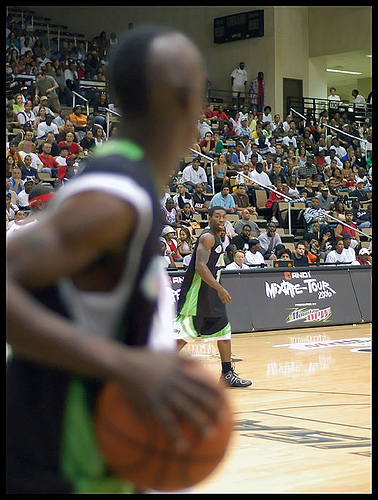Why Players have a lack of Power when Passing


Passing is one of the most commonly used offensive skills in basketball. All offensive systems from fast breaks, offensive transition, and all manner of half court offences all rely on passing to help create opportunities by shifting the ball and defenders. If a team’s passing is poor then as a result the team’s offense and points production will be affected negatively. A common issue when analysing what is going wrong with a team’s passing is identifying that players are not generating enough power to be able to take advantage of a situation or just get the job done of maintain possession.
There are some common areas of note when there is a breakdown technique which is leading to poor passing power. In starting however each player should have their own technique watched and reviewed so even the slightest corrections can be made and the overall performance of the group solidly improved.
Not Stepping Towards Target
The legs are where the initial power from a pass is generated. Players should start to build into their technique the habit of always stepping towards their intended target. This will allow the biggest muscle groups in the legs and core to be activated and the best possible kinesthetic flow to happen as a result of the power to be imparted into the pass.
Not Controlling Arms
For new players the focus in regards to arms and their positioning is all about the correct performance of technique. For senior or elite players it is about the individual respecting the need to do the small things right so the big things will more likely happen.
The correct technique should see the arms of the player pushing through or levering the ball only to finish with both (in push or baseball passing technique one arm) pointing towards the intended target. This ensure all the control and action of directing the ball finishes at the intended target.
Holding onto the Ball for too Long
Just before a player’s stepping foot hits the ground is when the most amount of momentum and energy will be generated. This is the time in which a ball should be released in the technique of passing.
By waiting until the lead foot has made contact with the ground will provide stability, but robs the player’s pass of extra energy which is generated. This can be a risk and reward situation that each coach will need to evaluate.
For players just starting out with the technique or those struggling with making the right choice when passing then maybe waiting until both feet are in contact with the ground can be the best option. However, challenging players with this technique will help them to achieve better results when passing if they can utilise maximum power while in “game like” situations.
Confidence
One of the intangible aspects of passing power is confidence. A player must feel comfortable with the knowledge that the intended passing option presented is the right one. Within a team’s offensive systems, there will be any number of different reads and choices to make. From these options, a player must select the best possible option. If a player is not confident in their identification of these options, they can become timid or only utilise a very narrow range of passing targets that will in turn limit the effectiveness of the offense.
All players on the court need to be aware of the possible options from any point during an offense. Understanding these breakdowns within each and every phase or play will assist in improving the percentage of completed passes, but also to the points as a result.
Having the right focus on what is need by a player when examining passing is vital for the improvement of a team’s possession and passes completed. While none of the points discussed above are that difficult to correct what they do demonstrate is very significant problems can have very simple beginnings.

